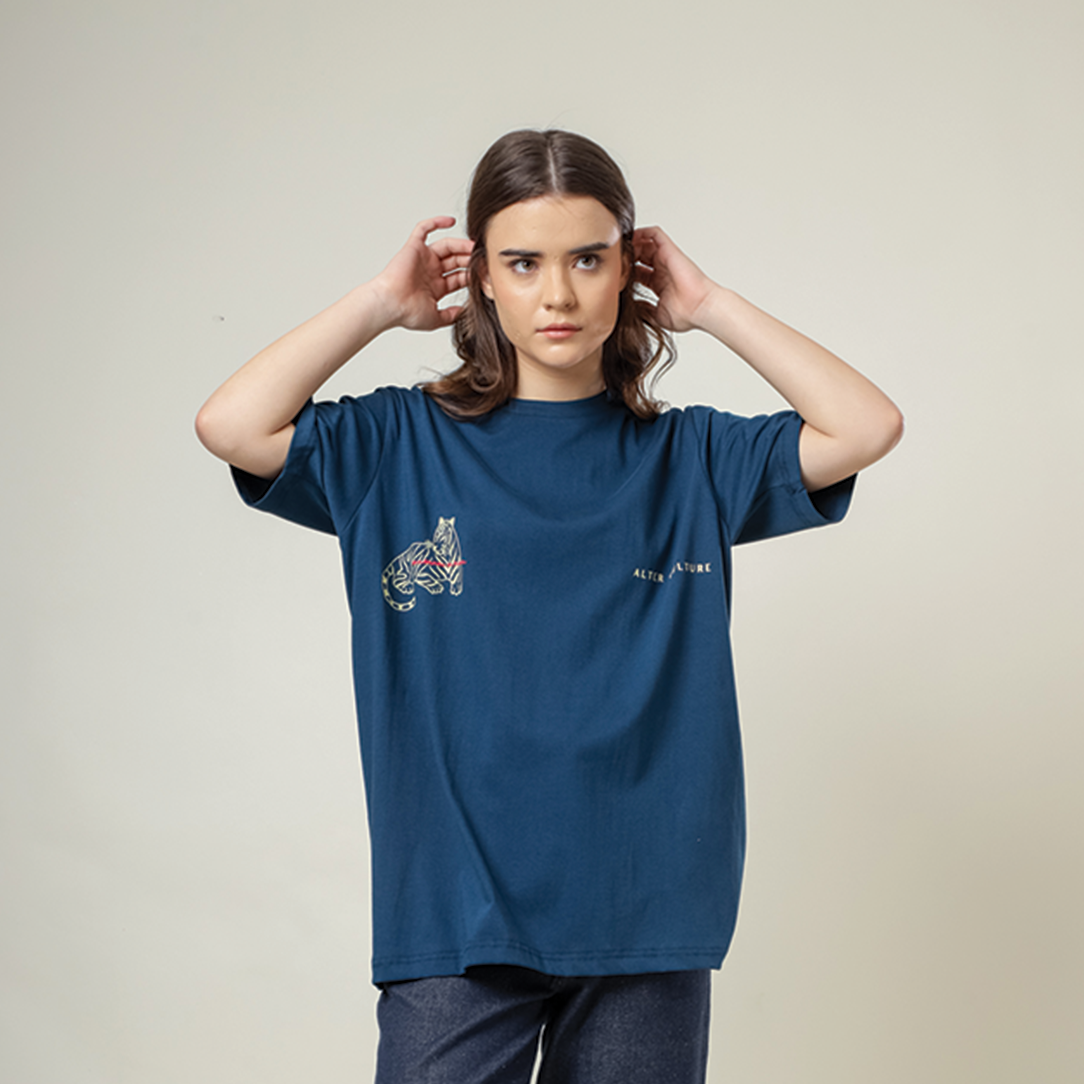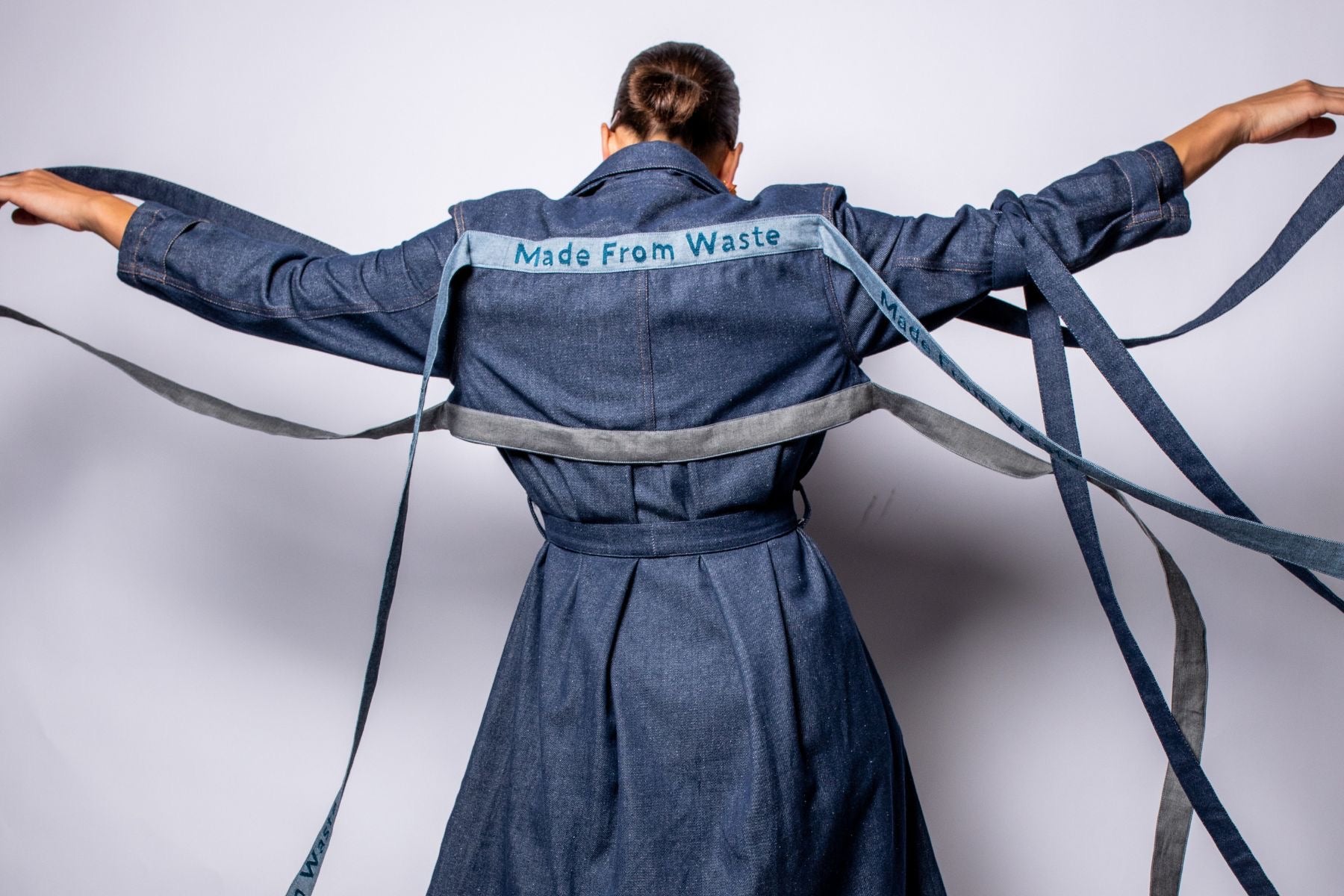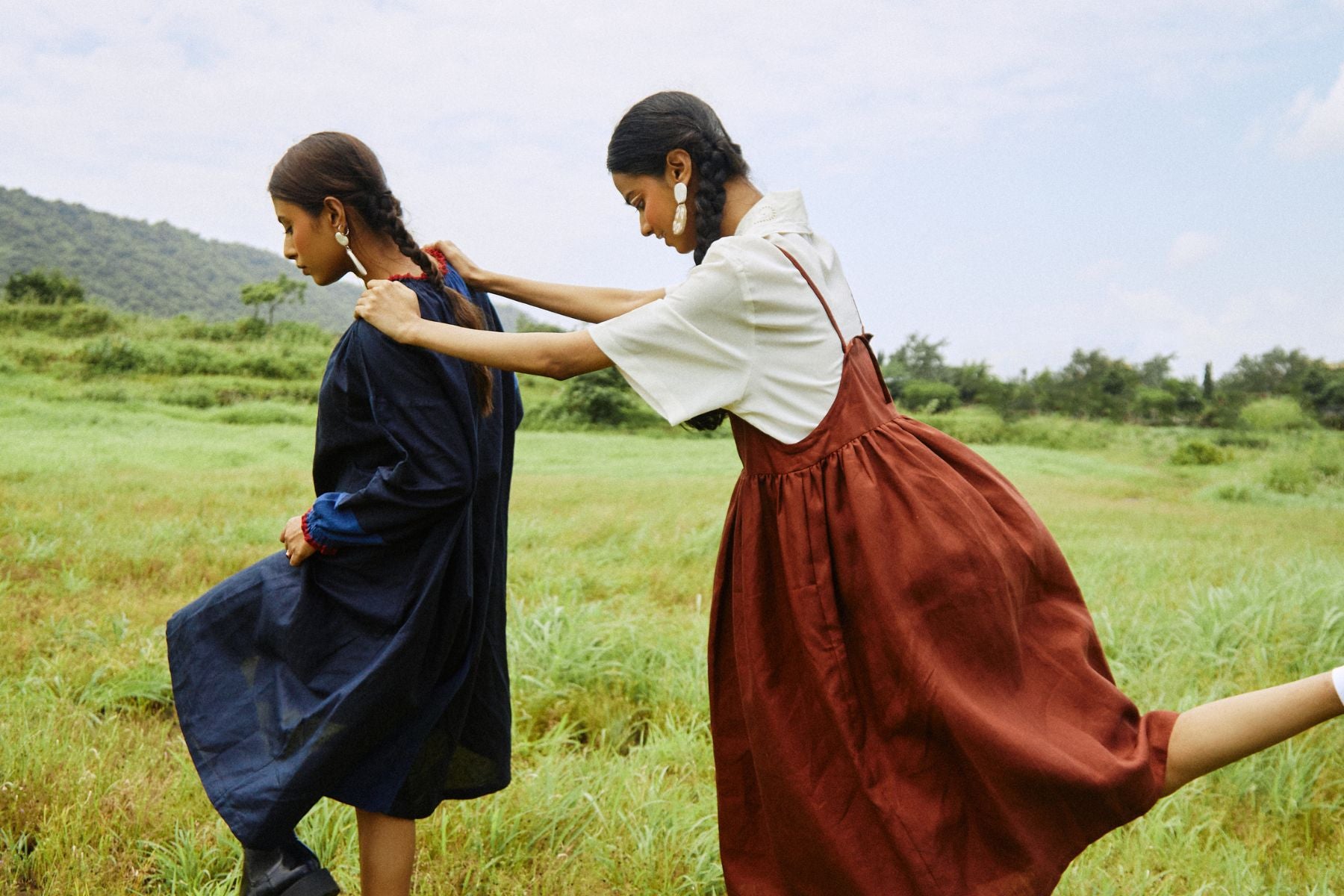
How are sustainable clothes made?
Most of us by now have probably come across the term ‘sustainable fashion’. All over the world, sustainable designer dresses for women and men are getting promoted as “climate-conscious products”. Eco-friendly garments are made in a way that is pro-planet.
For the widespread of the industry, you can now find sustainable clothing online India as well. For the production of sustainable clothes like sustainable designer dresses for women and men, the fashion industry offers many material options ranging from organic natural materials, recycled material, remanufacturing and alternative materials like hemp, cork, pinatex, tencel etc. Other areas of focus for sustainable fashion brands are working conditions of their artisans and better management or resources and active participation to reduce pollution emissions.
Brands like Doodlage are acclaimed to be eco-friendly and follow ethical practices. But the question is it possible to be 100% eco-friendly? Can clothes be made while keeping pollution emission low? Can fashion be made sustainable? Let’s take a closer look!
The supply chain of sustainable fashion:
When you buy a garment from a store or a website this product has already travelled miles before reaching you. This long journey has added tonnes of pollutants to the environment around you.
Most popular fabrics that are used to create fashionable products whether natural or synthetic are produced with a huge environmental footprint.
We all love wearing good looking clothes but did you know that the fast fashion supply chain adds more than 8,000 harsh chemicals to our air and water; 10,000 litres of water is used to create just 1kg of cotton for the fashion industry and the working conditions of our artisans ‘people behind the clothes’ becomes worse each year, forcing most artisans and their children to opt for alternate career options.
Sustainable brands like Doodlage are trying to change this narrative.
- They work with fair wage factories, social enterprises and NGOs to fulfil their vision of providing a better lifestyle for their workforce
- For any sustainable fashion brand it is important to keep growing their efforts as they scale as the problems in the industry are many
- Working with factories with waste and water management systems is another way to create sustainable fashion this reduces soil pollution and water pollution
- Choosing natural and biodegradable material, better printing and dyeing options with low environmental footprint ensures that even if the product reaches landfills it does not add to pollution
- Opting for better last mile delivery partners, reduces air pollution through logistics
Choosing the right material is absolutely critical. Maximum resources in garment production are used at this stage.
- Fashion consumed 342 million oil barrels are consumed to produce polyester for our clothing
- 70 million trees are cut to produce viscose for the fashion industry
- 2700 litres of water is used to make a single T-shirt
While we understand building 100% conscious brands is hard to achieve, choosing better material can go a long way.
- Biodegradable material - material that is capable of being decomposed by bacteria or other living organisms and thereby avoiding pollution. While this is a great place to start it is important to understand the pollution created and resources used to produce the material. Like cotton is biodegradable but the conventional cotton is extremely polluting and uses excessive water vs organic cotton which does not pollute soil and underground water but still uses a lot of water. Organic cotton units with a water recycling facility powered by solar energy would be best fit but are not always accessible. So start where possible and not getting overwhelmed is key. Another way to understand material is by looking for certifications or sourcing from small and credible producers, who might not be able to provide certifications but follow open door policies for buyers to understand their culture, product and ethics better.
- Recycled material - made from existing materials. Like recycled polyester made from used plastic bottles instead of crude oil. While this material is actively replacing use of fresh polyester it comes with fear of microfibres that are released every time you wash polyester material.
- Alternate material - building your business around new age material like sustainably sourced Cork leather instead of leather. New material is being discovered every year to fuel the fashion industry with an aim to replace resource intensive traditional materials. While there is still a long way to go for these materials to be available at the right price and quantity. Luxury and premium brands have been early adopters of these materials which will eventually give way for mass adoption.
As a consumer one should also start educating themselves about these materials and read the label. As fashion impacts the environment around us (everything we breathe and drink) and our choices will shape the direction of this industry.
Benefits of Sustainable Fabrics:
- They are skin-friendly
- Encourages more people to adopt sustainable alternatives
- High-quality long lasting products
- Good replacement for fashion fashion - pushing for buy less buy better
- Eco-friendly with low environmental impact
2. Eco-friendly production of clothes
It’s often hard for small and growing businesses to be able to focus on sustainable fashion holistically for the costs associated with it. But as your brand thrives and scales its important to start endorsing other areas of sustainable fashion like ethical production or working with eco-friendly production factories. As a sustainable fashion label you can choose to focus on any one thing in the beginning till the time your vision is still to keep cleaning your supply chain as you scale.
Depending on what your supply chain looks like, rural craft clusters working with traditional biodegradable locally sourced material and natural dyes or big production houses with water management systems using solar energy with cradle to cradle certification, you can find eco-friendly alternatives to create your products.
Eco friendly production focuses on the kind of factories and organisations you work with and the sustainable practices do they follow.
Sustainable brands like Doodlage and their exemplary collections of sustainable designer dresses for women are made using locally sourced waste by upcycling industrial waste and using recycled materials. Minimising the use of natural resources at source. Their products are created in ethical factories around Delhi and bangalore to reduce emissions from logistics.
3. Ethical Working Conditions
Fashion touches so many people right from the farmer that grows cotton for that little black dress to the model who walks the ramp wearing it, the consumer who buys and the team that works on selling and marketing it. For years the fashion industry has worked to make clothes cheaper and faster. Reducing the cost of production and increasing the rate of production has left people in garment making poor, resources overused and lands/waterways polluted.
For a sustainable fashion brand it becomes essential to for then keep the welfare of the people at the centre of their business. Opt for registered fair wage factories, find factories with open door policies, discuss artisan wages, find NGOs and social enterprises to support, work with decentralised systems by reaching out to artisans clusters in rural areas. These are just a few examples to tap into alternate supply chains while scaling your fashion business.
4. Sustainable Last Mile LogisticsAnother important area of focus is increasing packaging waste from our growing appetite for fashion. It would be ideal to look for sustainable packaging alternatives. Many large players are entering this industry helping large and small scale businesses to choose greener packaging solutions. These could be made in biodegradable, recyclable, recycled or reusable materials.
Lastly, think about choosing greener logistics for last mile consumer delivery reducing your environmental impact wherever possible.
Other ways to reduce your waste at last mile delivery:
- Monitor your data closely to avoid overproduction.
- Optimised planned deliveries to deliver as many packages using as few drivers, trucks and other resources as possible
- Recycled & reusable packaging
- Reassessing return policies
- Choosing partners in a circular supply chain.
How does Doodlage make sustainable clothes?
Upcycling of Materials:
Wasted raw materials are upcycled to create limited collections of sustainable designer dresses for women.
We collect:
- Post cutting wastes
- Defected fabrics
- Dead stocks
- Mis-prints
Recycling of Materials:
Post-consumer wastes and cutting wastes from factories are recycled to make new yarns which are then weaved to create fabrics on handlooms.
The recycled collection of Doodlage uses such materials for producing its outstanding range of apparel.
How to make a conscious purchase?
- Keep the budget & choices in mind
- Choose biodegradable, organic fabrics, alternate material over virgin polyester, nylon or any such toxic materials
- Think about the people who made the clothes & if they are paid enough for that
- Shop locally
- Choose quality over quantity to make clothes last longer & decrease disposability.
- Opt for brands like Doodlage whose sole mantra is “climate positive conscious-fashion”.
So go ahead and make the world a better place by opting for sustainable clothing.





Leave a comment
This site is protected by hCaptcha and the hCaptcha Privacy Policy and Terms of Service apply.